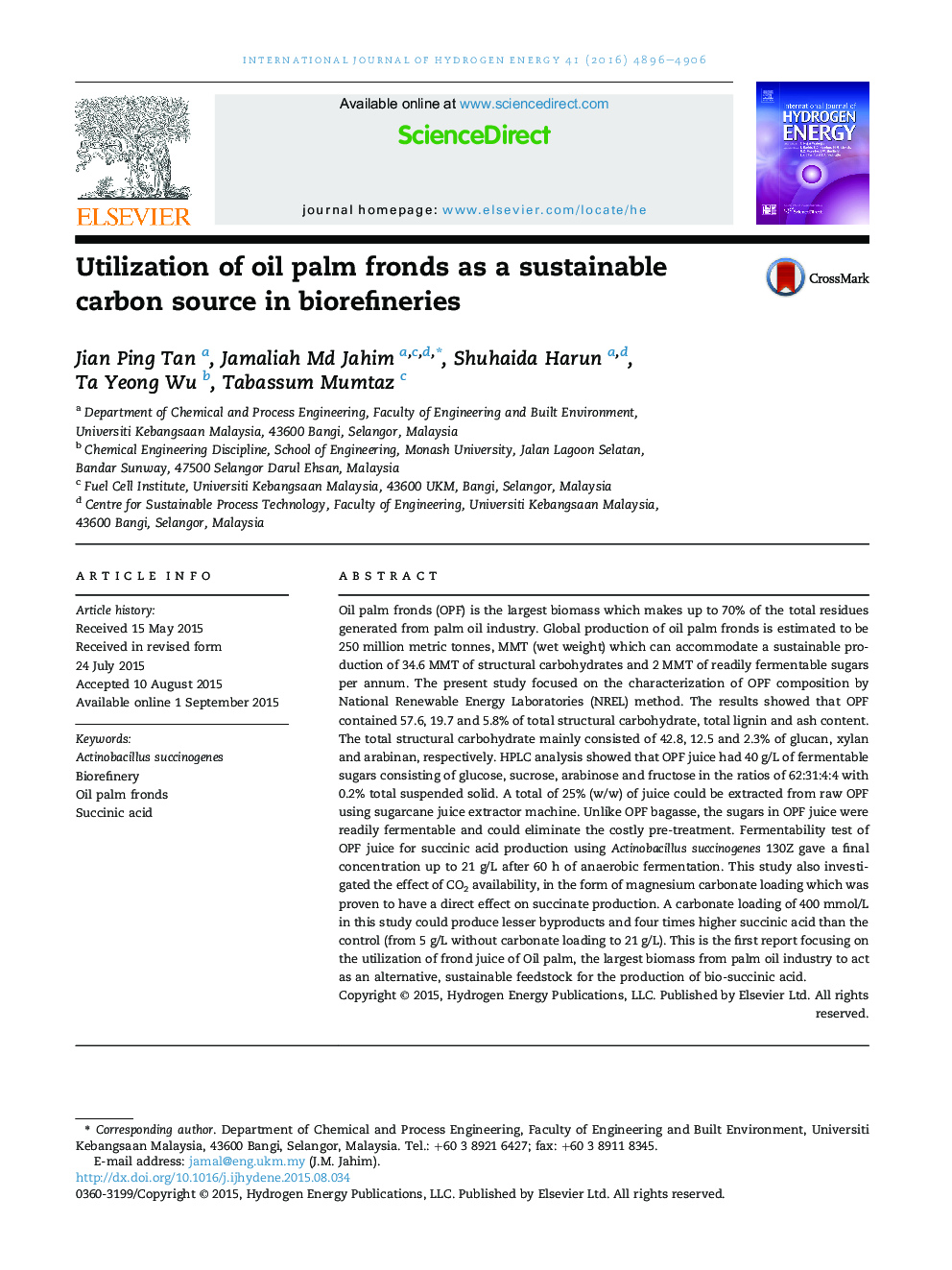| Article ID | Journal | Published Year | Pages | File Type |
|---|---|---|---|---|
| 1271178 | International Journal of Hydrogen Energy | 2016 | 11 Pages |
•Potential of OPF biomass as per carbohydrate content, availability and cost demonstrated.•OPF juice can provide 34.6 MMT of structural carbohydrate and 2 MMT tonnes of readily fermentable sugars annually.•OPF juice had 40 g/L of fermentable sugars consisting of glucose, sucrose, arabinose and fructose.•First report on succinic acid production from fermentable sugars of oil palm frond (OPF) juice.•76% Bioconversion of sugars into succinic acid was achieved using Actinobacillus succinogenes.
Oil palm fronds (OPF) is the largest biomass which makes up to 70% of the total residues generated from palm oil industry. Global production of oil palm fronds is estimated to be 250 million metric tonnes, MMT (wet weight) which can accommodate a sustainable production of 34.6 MMT of structural carbohydrates and 2 MMT of readily fermentable sugars per annum. The present study focused on the characterization of OPF composition by National Renewable Energy Laboratories (NREL) method. The results showed that OPF contained 57.6, 19.7 and 5.8% of total structural carbohydrate, total lignin and ash content. The total structural carbohydrate mainly consisted of 42.8, 12.5 and 2.3% of glucan, xylan and arabinan, respectively. HPLC analysis showed that OPF juice had 40 g/L of fermentable sugars consisting of glucose, sucrose, arabinose and fructose in the ratios of 62:31:4:4 with 0.2% total suspended solid. A total of 25% (w/w) of juice could be extracted from raw OPF using sugarcane juice extractor machine. Unlike OPF bagasse, the sugars in OPF juice were readily fermentable and could eliminate the costly pre-treatment. Fermentability test of OPF juice for succinic acid production using Actinobacillus succinogenes 130Z gave a final concentration up to 21 g/L after 60 h of anaerobic fermentation. This study also investigated the effect of CO2 availability, in the form of magnesium carbonate loading which was proven to have a direct effect on succinate production. A carbonate loading of 400 mmol/L in this study could produce lesser byproducts and four times higher succinic acid than the control (from 5 g/L without carbonate loading to 21 g/L). This is the first report focusing on the utilization of frond juice of Oil palm, the largest biomass from palm oil industry to act as an alternative, sustainable feedstock for the production of bio-succinic acid.
